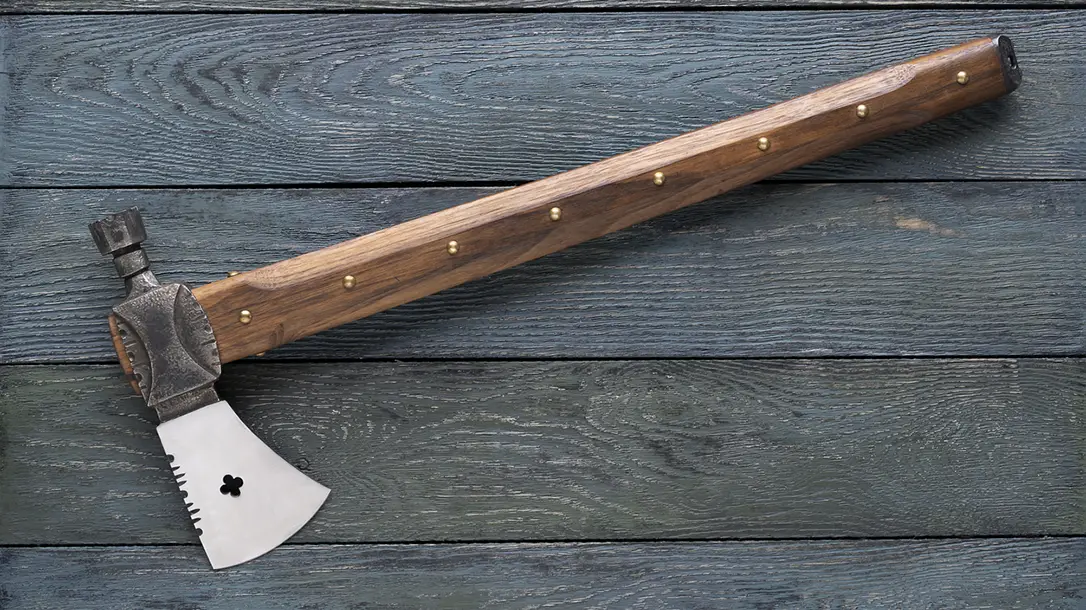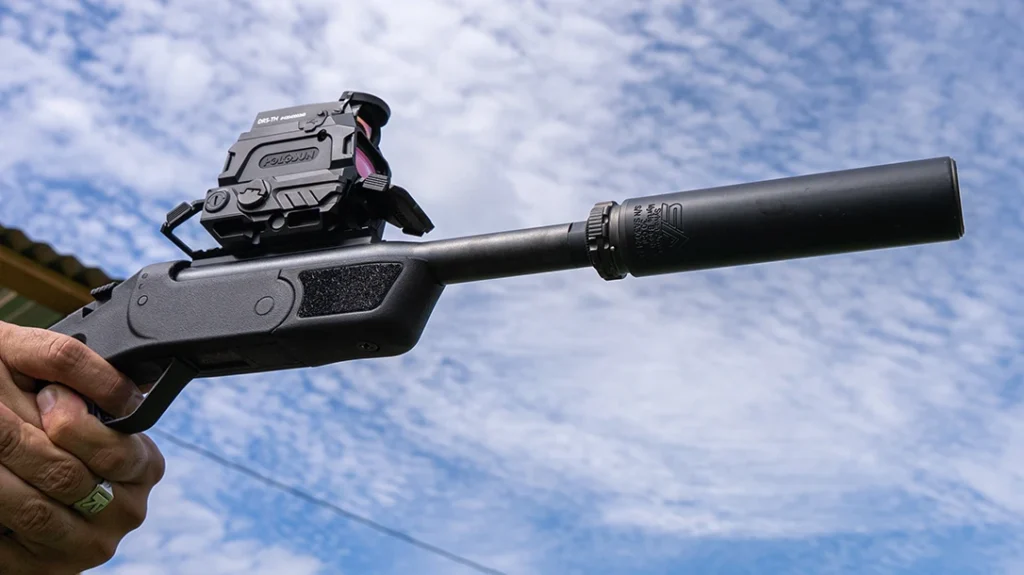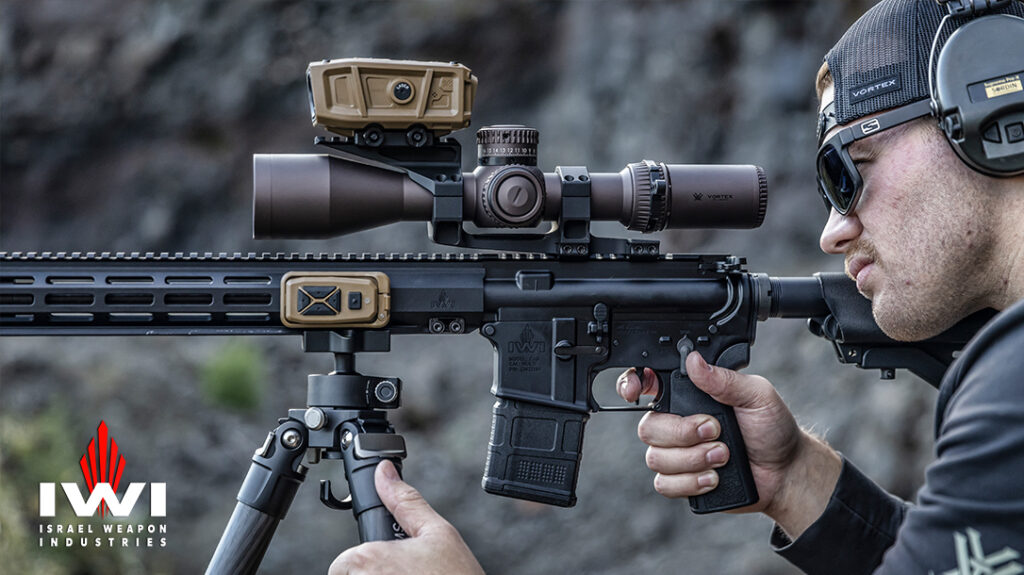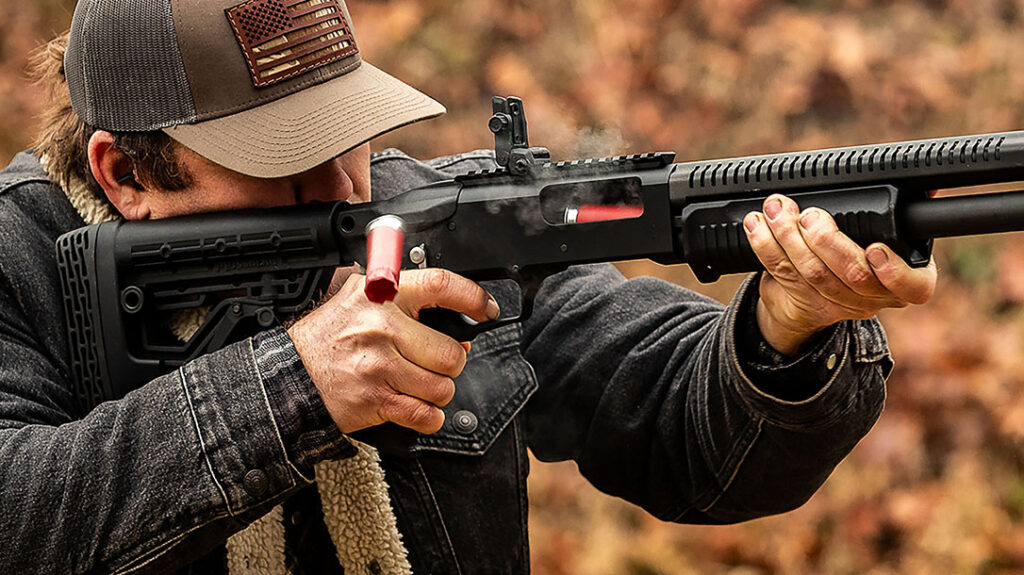Few weapons carry historical significance, symbolic power, and modern tactical relevance like the tomahawk. It originated as a practical tool and weapon for Native American tribes. Over time, the tomahawk has evolved into a staple of both military gear and civilian survival kits. Its history is rich with cultural meaning, its form adaptable across centuries, and its utility proven on battlefields and in backwoods alike.

Origins and Early History -The Tomahawk
The word “tomahawk” comes from the Algonquian word tamahaac, used to describe a light axe. Early tomahawks crafted by Native Americans were made from stone heads affixed to wooden shafts using rawhide or sinew. These tools served multiple functions: cutting wood, preparing food, crafting shelter, and, when necessary, as deadly weapons of war.
Advertisement — Continue Reading Below
When European settlers arrived in North America, they introduced metal-forging techniques and materials. Native artisans quickly adopted especially iron and steel. Metal tomahawks were more durable, held sharper edges, and could be crafted with more precision than their stone counterparts. This fusion of European metallurgy and Native design created the recognized tomahawk form today. It is a compact, lightweight axe with a straight handle and a single blade. Sometimes, it had a hammer, spike, or pipe bowl on the reverse side.

Symbol of War and Peace
Tomahawks were more than just tools of survival or war. They held deep cultural and symbolic significance. In some tribes, they were ceremonial, passed down as heirlooms, or given as gifts to forge alliances. The concept of “burying the hatchet,” a metaphor still in use today, comes from the Native American tradition. It involved literally burying tomahawks during peace negotiations to signify the end of hostilities.
Advertisement — Continue Reading Below
Colonial militias and early American soldiers were impressed by the tomahawk’s utility and effectiveness. They adopted it as part of their gear. It saw widespread use during conflicts such as the French and Indian War and the American Revolutionary War. Here, it proved especially useful in the dense forests of North America.

Modern Tactical Relevance
In today’s world, the tomahawk has made a notable resurgence, especially within military and law enforcement circles. Modern tactical tomahawks, often constructed from high-grade steel and advanced polymers, are favored for breaching, cutting, and close-quarters combat. Companies like SOG, CRKT, and RMJ Tactical produce purpose-built tomahawks designed to withstand punishing environments and rigorous use.
Advertisement — Continue Reading Below
In military applications, tomahawks have been employed for breaching doors, prying open crates, and smashing windows. They are also used for chopping through brush or barriers. Their lightweight design makes them easy to carry on a belt or in a pack. Furthermore, their simplicity ensures durability in even the harshest conditions.
Notably, U.S. special operations forces have incorporated tomahawks into their gear load-outs. They appreciate the blend of utility and raw, primitive combat effectiveness. In survival scenarios, a tomahawk proves useful. It can process wood for fires, build shelters, prepare food, and serve as a defensive weapon if needed.

Advertisement — Continue Reading Below
Design Features and Variants
While traditional tomahawks feature straight handles and simple cutting heads, modern variations are more specialized. Some models feature spikes for enhanced penetration, others incorporate pry bars, and some are fully modular for customization. Handles range from traditional hickory to fiberglass-reinforced composites, and blades may be coated in corrosion-resistant finishes.
Recreational and Cultural Resurgence
In recent years, tomahawk throwing has gained popularity as a hobby in the United States and Europe. Axe-throwing bars and competitive leagues have brought this traditional skill into mainstream recreation. Enthusiasts often use tomahawks due to their size and balance, finding them well-suited for the sport.
Collectors and history buffs value them for their historical significance. Authentic 18th- and 19th-century tomahawks, especially pipe tomahawks used in both combat and ceremonial settings, are highly sought after. They show up in auctions and museums.
Advertisement — Continue Reading Below
Legal Considerations
While the tomahawk is legal to own in most U.S. states, carrying one in public may be restricted under local or state weapons laws. Some jurisdictions consider them akin to knives or other edged weapons. Additionally, this may require secure transport or prohibit concealment. As with all edged tools, responsible ownership and awareness of local regulations are essential.
The Tomahawk
The tomahawk stands as a symbol of adaptability and endurance. It originated in pre-colonial North America. Now, it has a modern role in tactical environments and recreational sports. Thus, the tomahawk continues to prove its worth today. It serves as a reminder of the ingenuity of Native American craftsmanship and the brutal practicality of frontier survival. It also highlights the enduring appeal of tools that seamlessly blend simplicity with versatility.
Whether gripped in the hand of a special forces operator or a firefighter breaching a door, the tomahawk remains a tool that transcends time. A competitive thrower or a historian preserving the past finds value in it. The tomahawk is a blade forged with purpose and wielded with precision.
Advertisement — Continue Reading Below
























